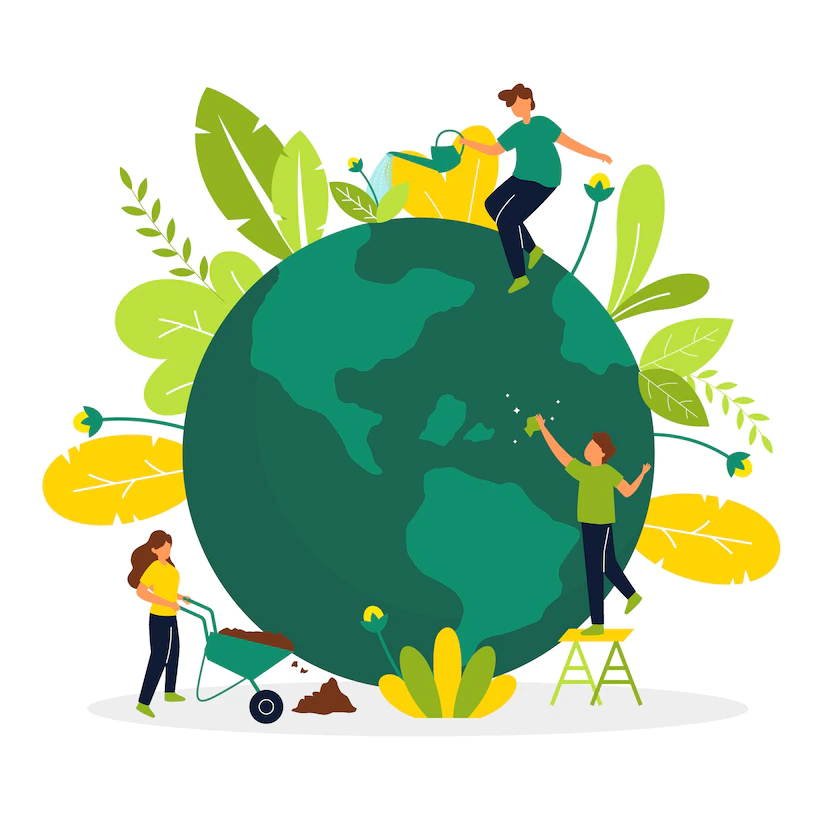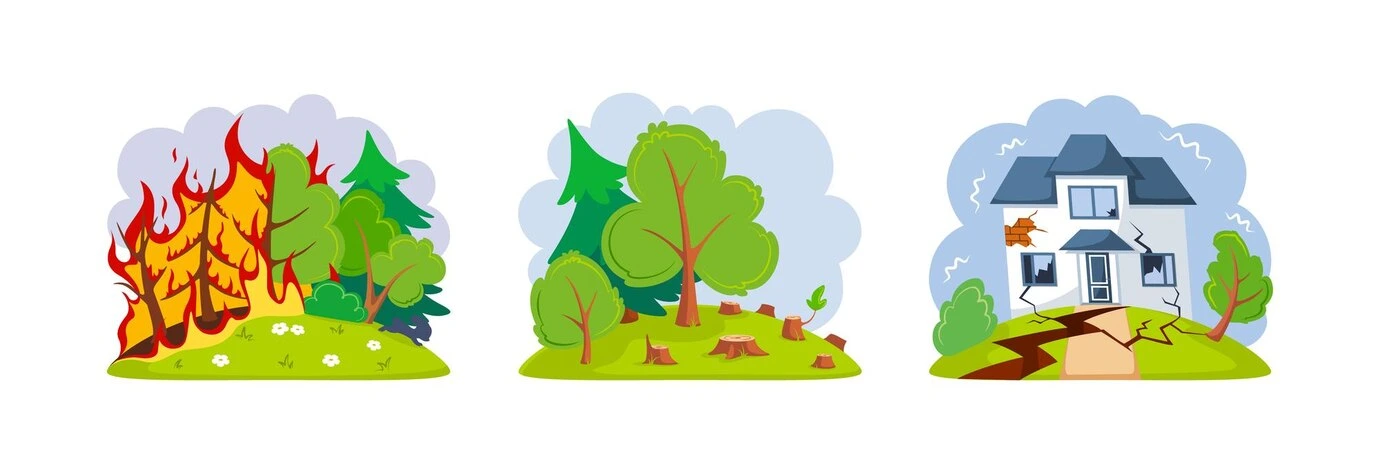Maybe You have seen advertisements, posters, and other things with the message “Go Green!” What exactly does it mean to “Go Green,” though? Going green can take many different shapes, but in essence, it just refers to being environmentally conscious and choosing economic practices that don’t harm the planet. People who “go green” are demonstrating environmental consciousness. The phrase means precisely what you would think it would mean: being conscious of the environment and making decisions that help, rather than harm, the planet.

Understanding the vulnerability of our environment and the significance of its protection is known as environmental awareness. Promoting environmental awareness is an effective way to care for the environment and contribute to building a better future for our kids. Environmental sensitivity has gotten more emphasis recently. It is fair to say that environmental awareness has become somewhat of a trend, from organic food to tiny dwellings that are environmentally friendly. But given its significance, it should be more than just a passing trend, even though it is nothing new. Read further to gain more knowledge about environmental awareness.
Environmental awareness: what is it?
We must first comprehend the environmentalist movement to define environmental awareness. An ideology known as environmentalism emphasizes how important it is for people to respect, safeguard, and keep the natural world free from anthropogenic (caused by people) ills.
The movement’s success depends heavily on environmental consciousness. We may start resolving the issues that endanger the physical environment by educating our friends and family about how fragile and vital it is.

Environmentally conscious practices
Going green can simply mean buying a glass or ceramic bottle instead of using single-use plastic water bottles. Plastic is extremely slow to decompose, and a sizable portion ends up in the oceans, killing both plant and animal life. Using an all-natural hair care product rather than an aerosol can of harmful chemicals is another example of going green.
Here are some examples of how to apply environmental awareness in your life:
Homes- An excellent place to start is with environmentally friendly buildings and building materials. The dangers of hazardous building materials, including asbestos, lead-based paint, lead pipes, and others, have recently come to the attention of developed countries. People can show that they care about the environment by building with natural materials that are safe for the environment. Excellent options include wood, stone, brick, copper, and other materials.
Water and energy efficiency- Energy conservation is another option to display environmental consciousness at home. Lights should be turned off when not in use as this is a simple approach to saving electricity. Some people even install solar panels and other types of alternative energy sources. Solar power has a lot of potentials to spread widely and become effective in the future.
We frequently take for granted the importance of the natural resource that is water, but clean water is in short supply in many regions of the world. An essential first step in displaying environmental awareness is to be aware of this. Water conservation goes hand in hand with energy conservation. When brushing your teeth, be careful not to waste water by keeping the faucet running.
Shopping and recycling- Some consumers choose clothing and goods made of natural materials and fibers over those that are synthetic. Recycling is undoubtedly a significant component of exhibiting environmental consciousness.
Activism- Some people who are deeply concerned about this topic end up becoming activists. They might plan rallies and activities or participate in protest marches. As we can see, there are many different ways to be environmentally conscious, and each person must determine which particular strategies work for them.
How to spread awareness about the environment?
Make sure you have a solid understanding of environmental concerns before you start advocating for environmental awareness in your community. Keep abreast of environmental news, study books, and other materials, and gain knowledge of the problems affecting your neighborhood. Discussing the environment with others will be much simpler if you’ve tried to educate yourself.
There are several instruments at your disposal to get engaged in promoting the environment, including group learning opportunities (inside or outside of the classroom), educational and inspirational seminars, online courses, books, articles, movies, and brochures.
There seem to be an infinite number of environmental difficulties, making it simple to become overwhelmed. Even though they are all significant, picking the environmental issue you feel is most urgent is a wise move that will assure your continuous participation. Try picking just one thing to concentrate on at a time. You’ll quickly realize the interconnectedness of all environmental challenges and identify your area of interest.

Environmental Issues
Here are some activities that can adversely affect the environment.
Oil drilling- This problem has a significant negative impact on the environment. Every part of the world is impacted by our worldwide addiction to fossil fuels. Oil spills, offshore drilling, and on-land oil drilling all damage marine life, stifle the earth and raise atmospheric CO2 due to the burning of fossil fuels, which leads to global warming and ocean acidification. This is a complex problem that is worthwhile to get involved with because it touches on a wide range of issues.
Deforestation- Millions of acres of forest are cleared each year for industrial purposes, including large-scale agriculture, oil extraction, and the manufacture of paper goods. Deforestation threatens the existence of numerous species, which results in the extinction of wildlife and biodiversity. The International Union for Conservation of Nature (IUCN) maintains current data on the Red List of environmentally endangered species.
Production of Plastic Goods- Our society produces a lot of waste, much of which is made up of plastic. The Environmental Protection Agency (EPA) estimates that 31 million tons of plastic garbage were produced in 2010 alone. The Great Pacific Garbage Patch is a sad example of how this rubbish winds up all over the world, both on land and in water.
Plastic waste is a problem, but the process of making plastic also requires the burning of fossil fuels. As stated by the U.S. According to the Energy Information Administration (EIA), the production of plastic items in the U.S. alone required 191 million barrels of natural gas liquids (NGL) and liquid petroleum gases (LPG) in 2010.
Read More: Natural pest control methods.
Best ways to solve environmental problems
Once you have a solid understanding of environmental challenges, you can use it to launch helpful projects in your community. Here are the most practical solutions to environmental issues.
Share Your Information
Discuss the issue’s importance and urgency with your friends, family, and neighbors once you’ve chosen a topic and educated yourself on it. By involving your community in the discussion, you may advance environmental awareness while also opening up possibilities for participation in group initiatives or other relevant causes.
Ideas for potential projects
- Take the bus, carpool, walk, or ride your bike to work or school to reduce greenhouse gas emissions. According to the EPA, transportation is responsible for 33% of the CO2 in the atmosphere.
- Think about investing in relevant technologies like clean power (solar or wind)- if not for your home, then perhaps for a community center. This activity can help in switching to clean, renewable energy.
- Consider purchasing reusable items like glass bottles and reusable bags, and cups. Avoid purchasing disposable items like paper towels, bottles, and bags made of plastic.
- Start recycling and composting to reduce the amount of waste you produce.
- When possible, purchase organic and pesticide-free food and support nearby businesses and farms, or establish your own community garden.
Last Word
Once you’ve decided on a subject and launched a community or personal initiative, tell the world about it! Encourage participation from your workplace, neighbors, friends, family, and even the local government. Working with people in your community will make launching a local project and raising environmental awareness much simpler and more efficient. Being an environmental steward requires actively promoting environmental awareness. Start contributing to the change and educating your neighborhood about the requirements for a sustainable future.

